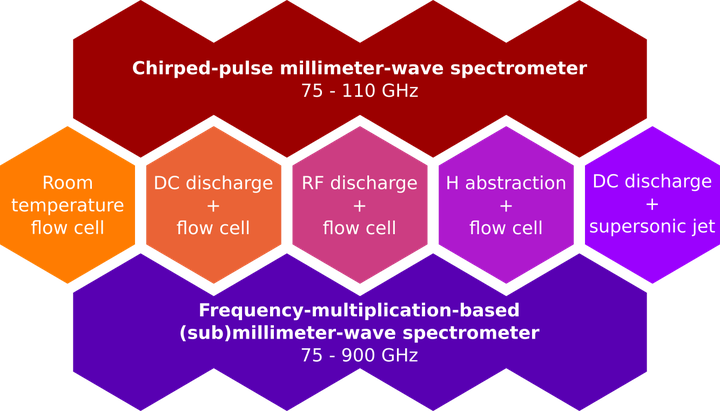(sub)millimeter-wave spectroscopy

The advent of new generation observational platforms as the Atacama Large Millimeter Array (ALMA) and the NOrthern Extended Millimeter Array (NOEMA), that allows observation of various astrophysical objects in the millimeter and submillimeter wavelengths (roughly 50 GHz -1 THz), strengthen the need for laboratory data in this spectral range for molecules of astrophysical interest. To enable new interstellar detections, our groups investigate in the laboratory the rotational spectrum of molecules, both stable and reactive (produced by radiofrequency, microwave, electrical discharges or H abstraction by F atoms), in this spectral region where the observed transitions act as unique fingerprints.
We use two (sub)millimeter spectrometers: one allowing to cover the 75-900 GHz region using electronic sources (frequency multiplication chain) and one broadband (chirped-pulse) spectrometer operating in the 75-110 GHz region.